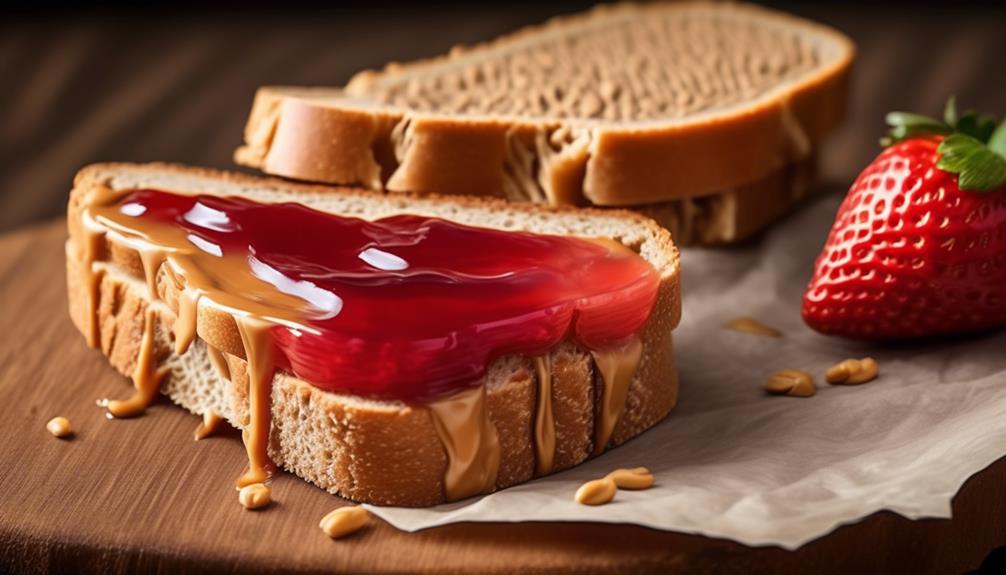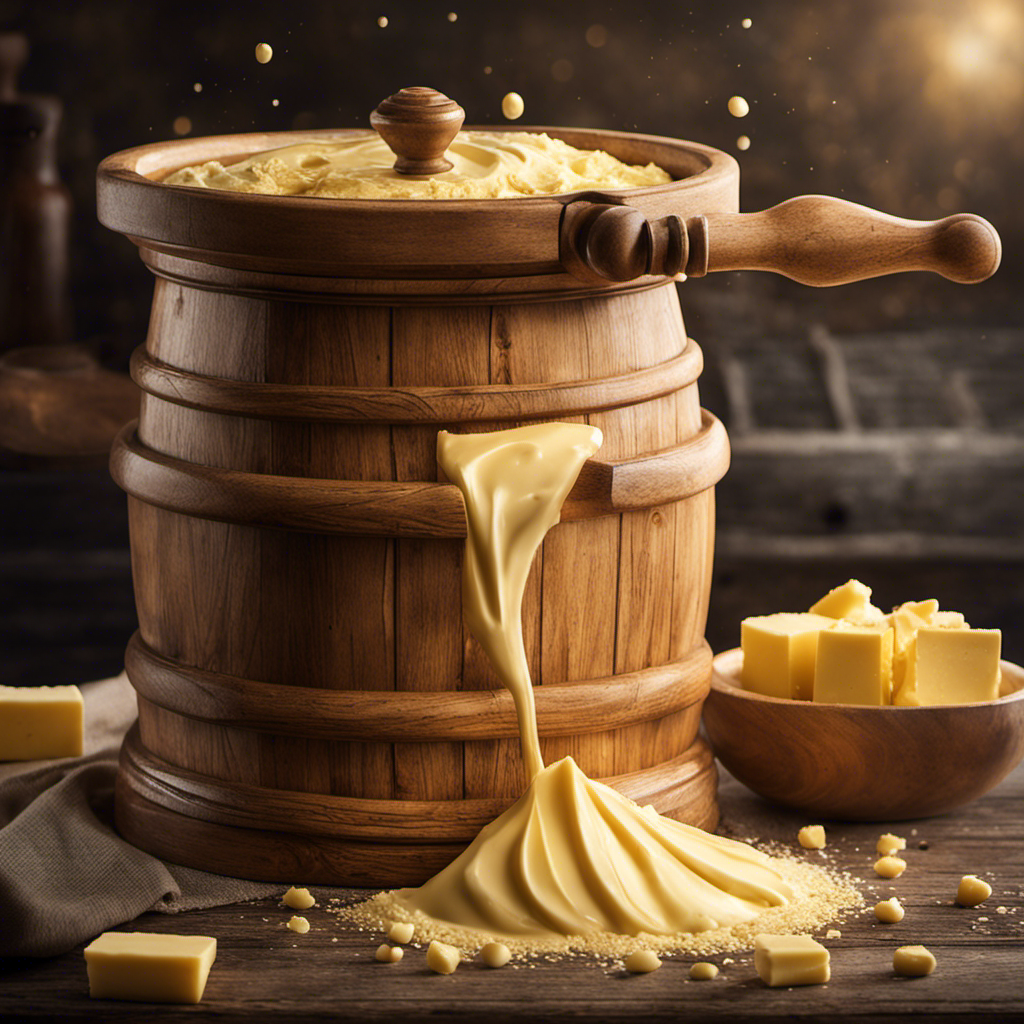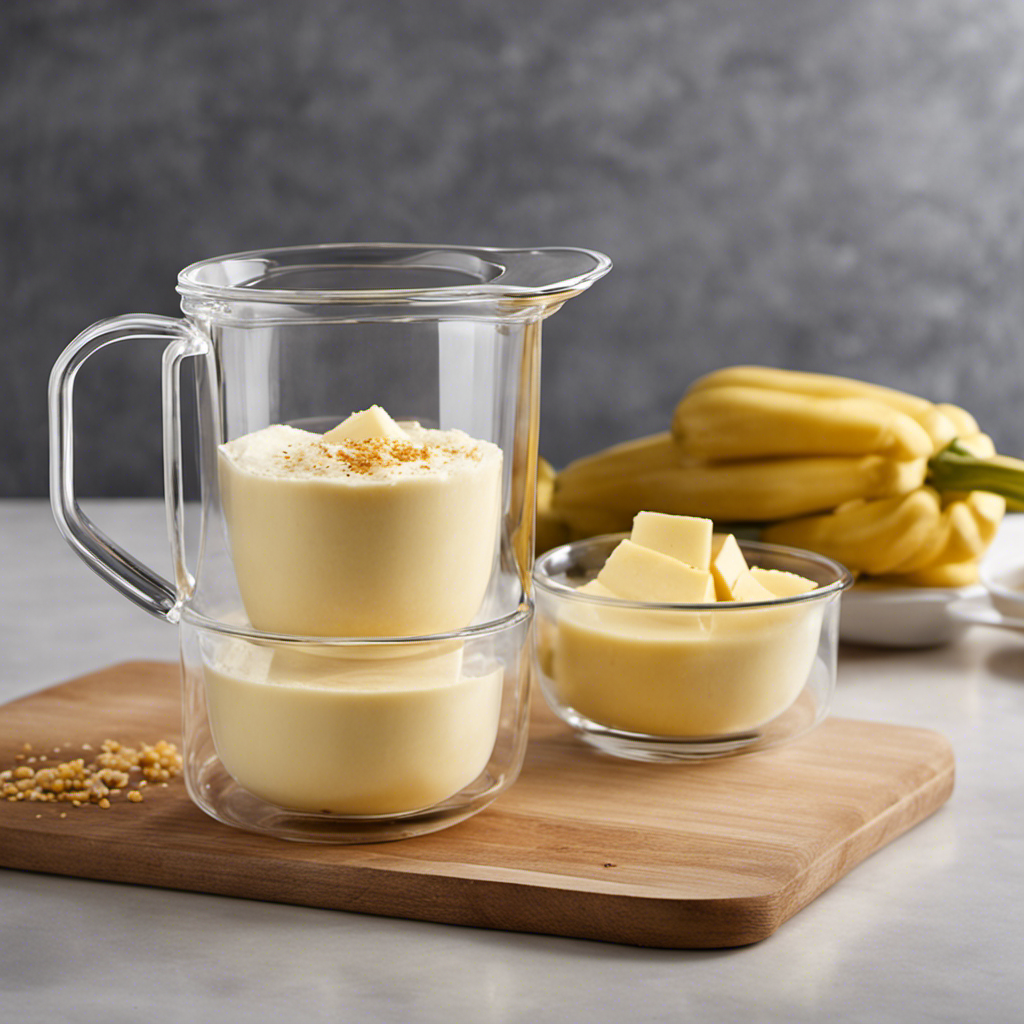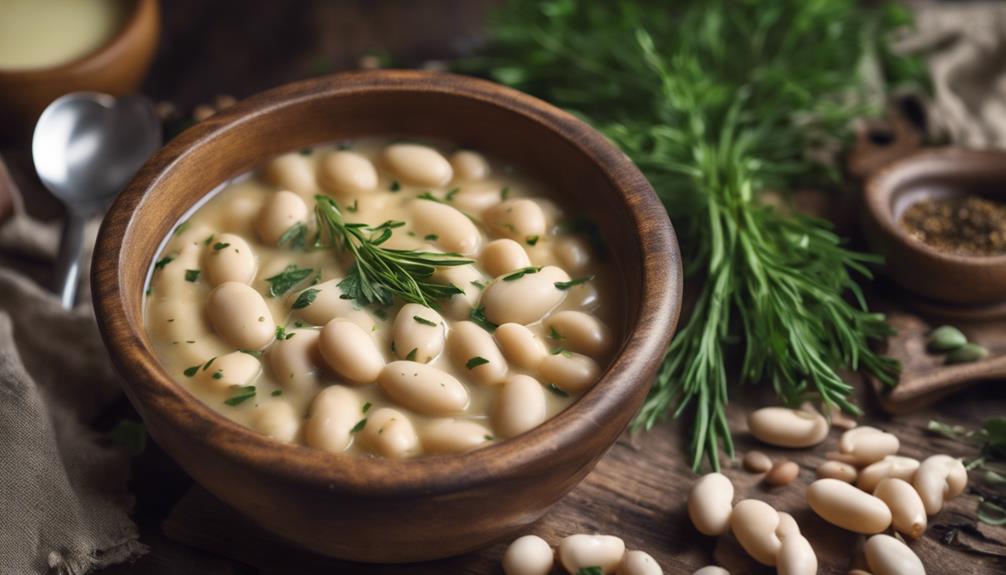I have found a tasty method to enhance the taste of any meal: bone marrow butter.
Did you know that bone marrow is not only rich in nutrients but also adds a luxurious creaminess to butter?
In just a few simple steps, I’ll show you how to create this indulgent condiment that will take your cooking to the next level.
Gather the ingredients, prepare the bone marrow, mix in the butter, and season it to your liking.
Get ready to savor the delectable goodness of homemade bone marrow butter.
Key Takeaways
- Gathering and preparing bone marrow involves finding fresh bones with a good amount of marrow, roasting them in the oven, and scooping out the gelatinous marrow.
- Mixing the extracted marrow with softened butter creates a smooth and creamy bone marrow butter.
- Seasoning and flavoring the bone marrow butter can be done with ingredients like garlic, herbs, chipotle peppers, and citrus zest to enhance the taste.
- Storing bone marrow butter in the refrigerator allows it to be used for up to two weeks, and incorporating it into cooking can provide health benefits and add depth of flavor to dishes.
Gathering the Ingredients
First, gather all of the necessary ingredients for making bone marrow butter. Shopping for ingredients is an important part of the process. Head to your local butcher or grocery store and look for fresh bone marrow. It’s usually found in the meat section, near the beef cuts. Make sure to choose bones with a good amount of marrow inside.
Once you have your bone marrow, it’s time to prepare it. Start by preheating your oven to 450°F (232°C). Place the bones on a baking sheet and roast them for about 20 minutes, until the marrow becomes soft and creamy. Let them cool slightly before scooping out the marrow.
Now you’re ready to move on to the next step and start making your delicious bone marrow butter.
Preparing the Bone Marrow
Once you’ve got the bone marrow ready, you can start preparing it for the next step.
Bone marrow butter is a delicious and nutritious addition to any meal. Here’s how to prepare the bone marrow:
-
Roasting: Preheat your oven to 450°F (230°C). Place the bone marrow bones on a baking sheet and roast them for about 15-20 minutes, until the marrow is soft and begins to melt. This step helps to enhance the flavor and texture of the marrow.
-
Extraction: Once the bones are roasted, carefully scoop out the soft, gelatinous marrow using a spoon or knife. Be gentle to avoid breaking the bone and ensure you retrieve all the marrow.
-
Mixing: In a mixing bowl, combine the extracted marrow with softened butter. Use a fork or whisk to blend them together until you achieve a smooth and creamy consistency. This rich, velvety bone marrow butter can be used as a spread or added to dishes for a burst of flavor.
Cooking techniques like roasting bring out the natural flavors of bone marrow while providing health benefits. Bone marrow is a nutrient-rich food that is packed with vitamins, minerals, and healthy fats. It is known to support immune function, promote healthy bones, and aid in digestion.
Mixing in the Butter
Next, you’ll want to blend the softened butter with the extracted marrow until you achieve a smooth and creamy consistency. This step is crucial in creating a delectable bone marrow butter that will elevate any dish.
The butter adds richness and a velvety texture to the already flavorful marrow. As the butter melts, it beautifully coats the marrow, resulting in a spread that is incredibly versatile.
Whether you spread it on warm crusty bread, melt it over a perfectly grilled steak, or use it to sauté vegetables, the uses for bone marrow butter are endless.
To achieve the perfect consistency, make sure the butter is at room temperature and soft enough to easily blend with the marrow. This will ensure a smooth and creamy texture that is easy to spread and melts beautifully.
Now, let’s move on to the next step of seasoning and flavoring.
Seasoning and Flavoring
To enhance the flavor of your spread, you can add a variety of seasonings and spices. When it comes to bone marrow butter, the possibilities are endless. Here are three different variations of flavored bone marrow butter that will take your dishes to the next level:
-
Garlic and Herb: Infuse your bone marrow butter with the aromatic flavors of fresh garlic and a blend of your favorite herbs, such as thyme, rosemary, and parsley. This combination adds a savory and earthy taste to your dishes.
-
Smoky Chipotle: For a spicy kick, mix in some chipotle peppers in adobo sauce to your bone marrow butter. The smoky flavor of the chipotle pairs perfectly with the rich and creamy butter, adding a hint of heat to your recipes.
-
Citrus Zest: Brighten up your bone marrow butter with the zest of citrus fruits like lemon, lime, or orange. The citrusy notes add a refreshing and tangy element, balancing out the richness of the butter.
Whether you’re spreading it on bread or using it to cook, these flavored variations of bone marrow butter will elevate your culinary creations and leave your taste buds craving more.
Storing and Using Bone Marrow Butter
You can store bone marrow butter in an airtight container in the refrigerator for up to two weeks. This rich and flavorful ingredient not only adds a depth of flavor to your dishes, but it also has numerous health benefits.
Bone marrow is packed with nutrients like vitamins A, D, and K, as well as omega-3 fatty acids. Incorporating bone marrow butter in your cooking can help boost your immune system, improve bone health, and support brain function.
To get creative with bone marrow butter, try spreading it on warm crusty bread for a decadent twist on traditional butter. You can also melt it over grilled vegetables or steaks for a luxurious and savory finish. The possibilities are endless when it comes to using bone marrow butter in your recipes.
Whether you’re making soups, sauces, or even baked goods, this rich and flavorful ingredient will take your dishes to the next level. So go ahead, experiment and discover the wonders of bone marrow butter in your cooking.
Frequently Asked Questions
Can Bone Marrow Butter Be Made With Other Types of Fat Instead of Butter?
Yes, bone marrow butter can be made with other types of fat. However, using alternative fats may alter the taste. Experimenting with different fats like duck fat or bacon grease can provide a unique and flavorful twist to the traditional butter.
How Long Does Bone Marrow Butter Typically Stay Fresh in the Refrigerator?
In my experience, bone marrow butter typically stays fresh in the refrigerator for about 1-2 weeks. To maximize its shelf life, it’s important to store it in an airtight container and keep it at a consistent temperature.
Can Bone Marrow Butter Be Frozen for Long-Term Storage?
Yes, bone marrow butter can be frozen for long-term storage. It’s a great option if you have extra or want to preserve it for later. Additionally, you can use it in various recipes, like spreading it on toast or melting it over grilled steak.
Can Bone Marrow Butter Be Used to Cook or Sauté Vegetables?
When it comes to cooking vegetables, bone marrow butter adds a rich and decadent flavor that elevates any dish. Its silky texture and savory taste create a perfect harmony of flavors.
Can Bone Marrow Butter Be Used as a Spread on Bread or Toast?
Yes, bone marrow butter can be used as a spread on bread or toast. It adds a rich and savory flavor that pairs well with the crispy texture. It can also be flavored with herbs and spices, enhancing the taste even more. Additionally, bone marrow butter makes a delicious topping for steak.
Conclusion
Well, there you have it, folks! We’ve reached the end of our bone marrow butter journey. I hope you’ve enjoyed this adventurous culinary ride as much as I have.
Now, armed with the knowledge of how to make this indulgent spread, you can elevate your cooking game to new heights. So go forth, my friends, and spread that bone marrow butter on your toast with reckless abandon.
Remember, life is too short for boring butter. Live a little, and let the marrow-infused magic take you to buttery bliss!









